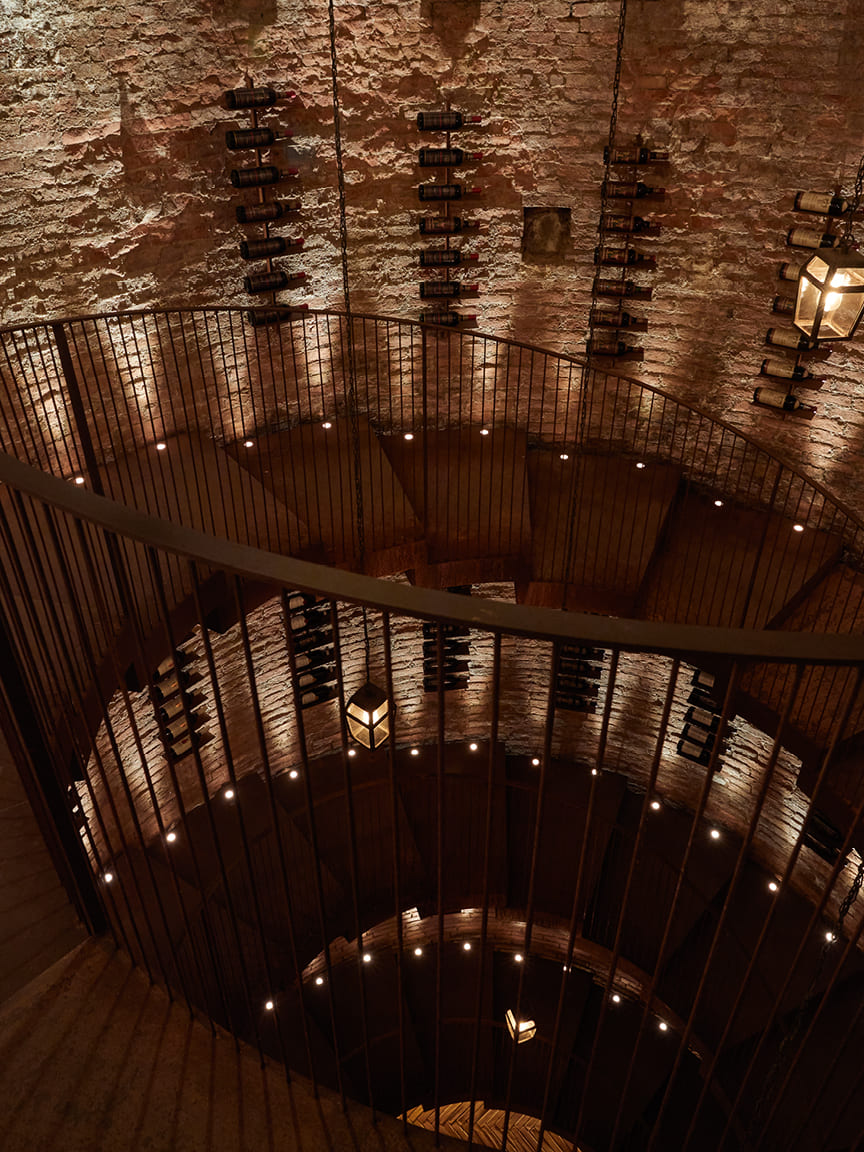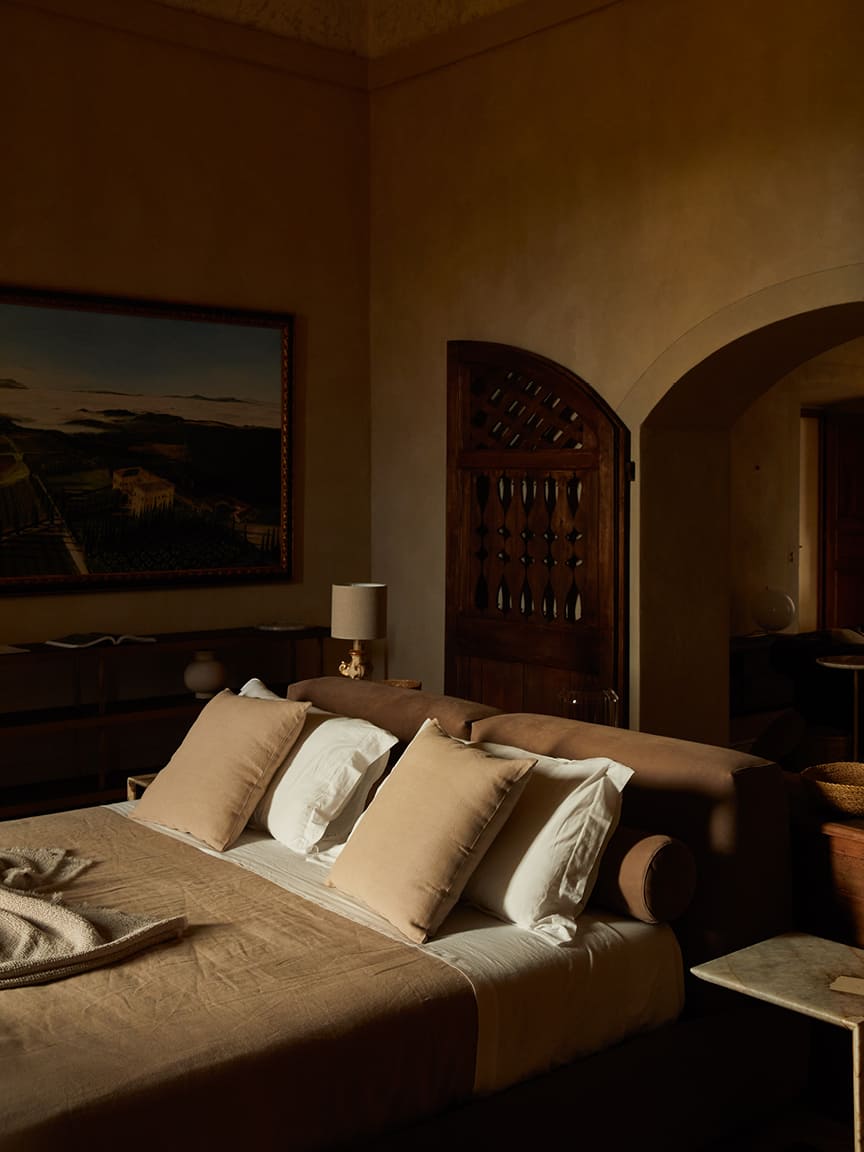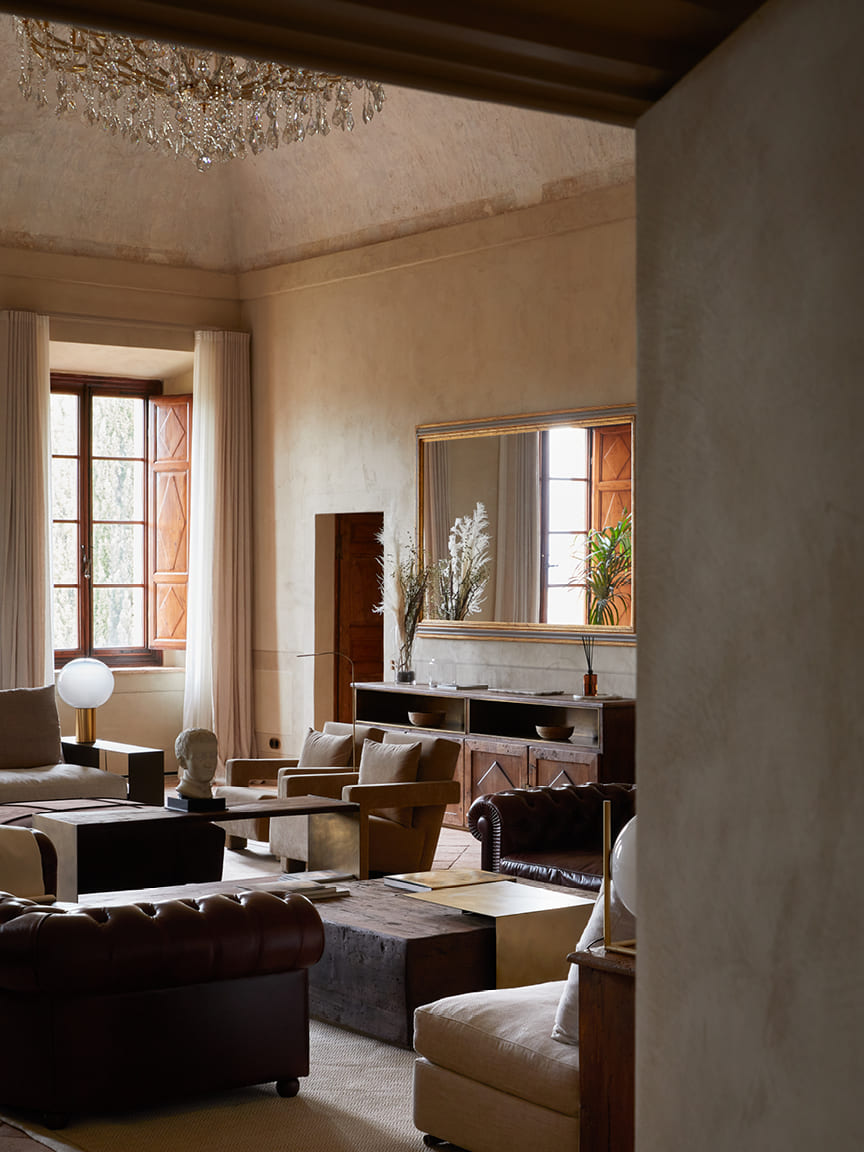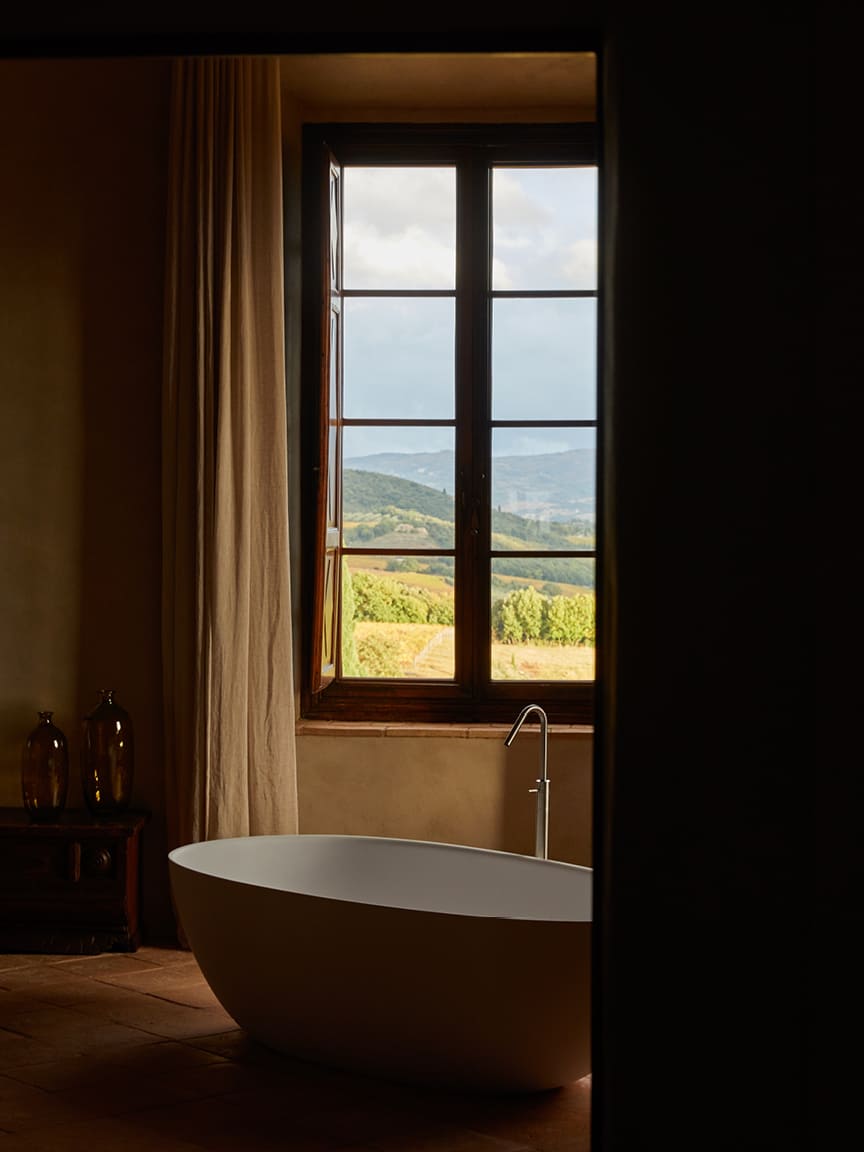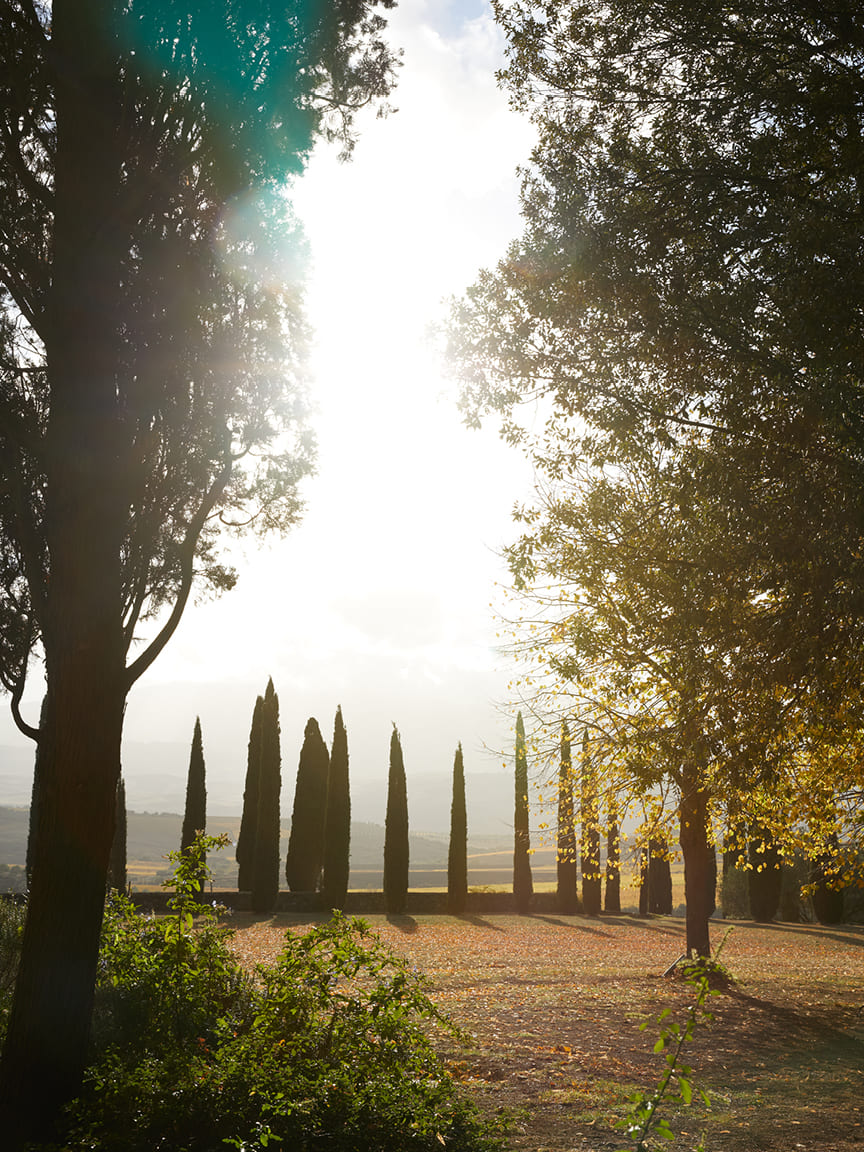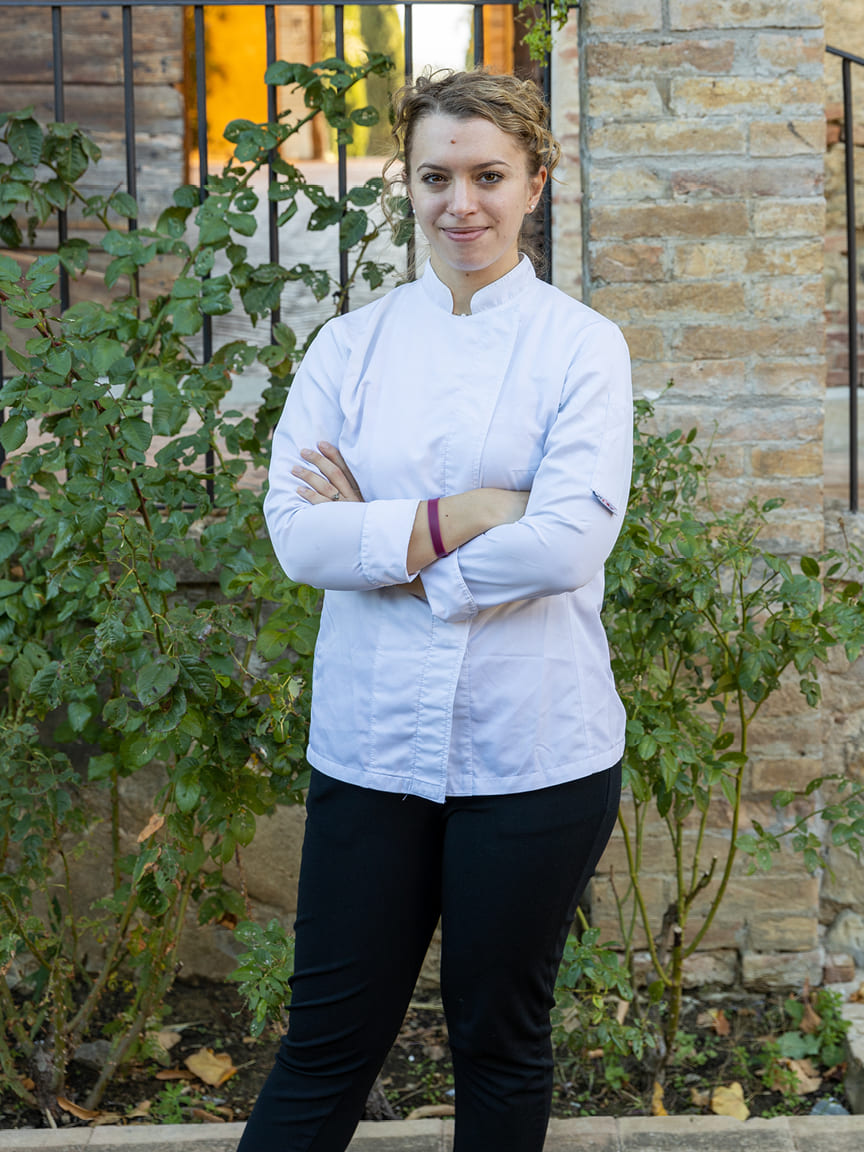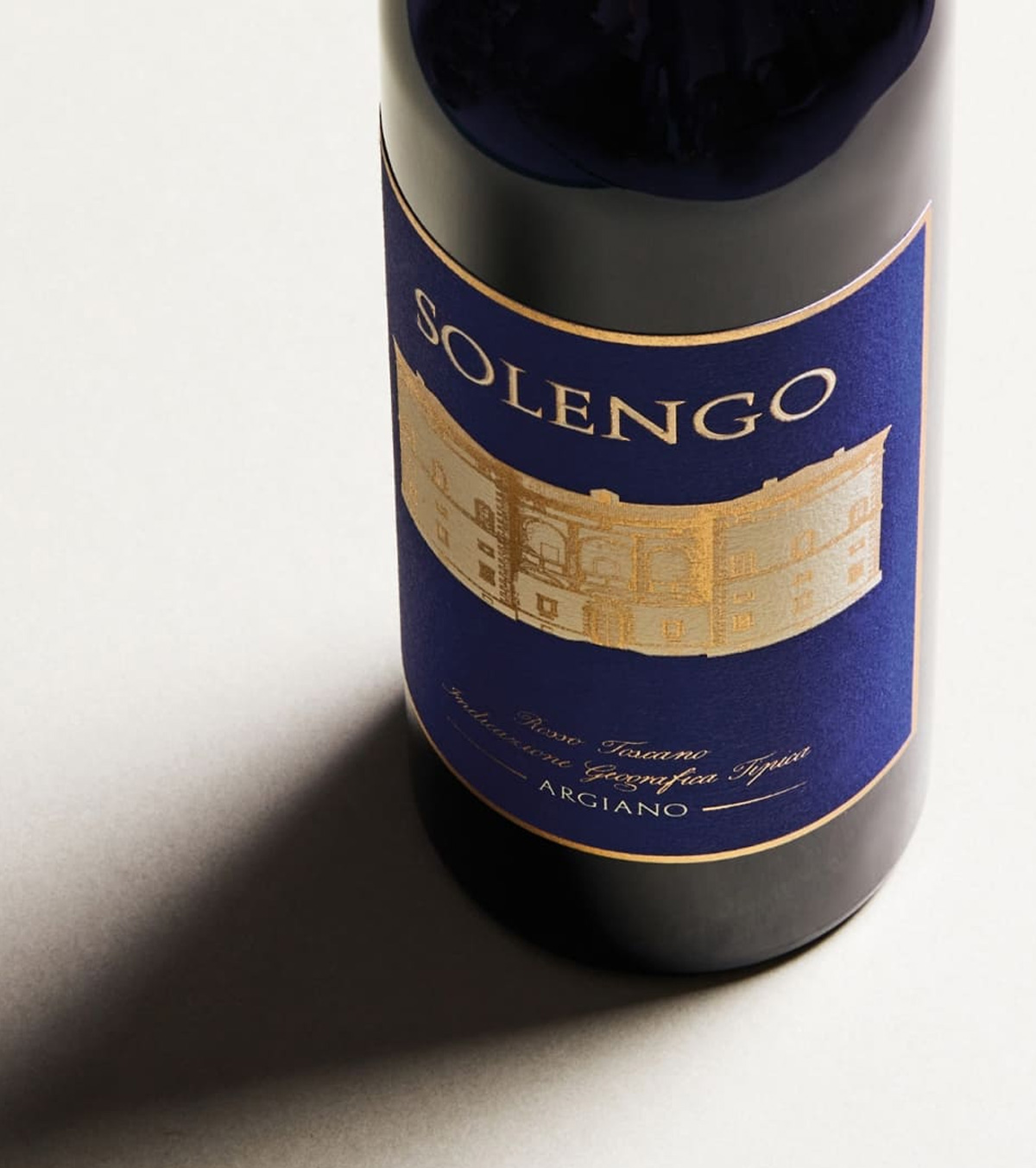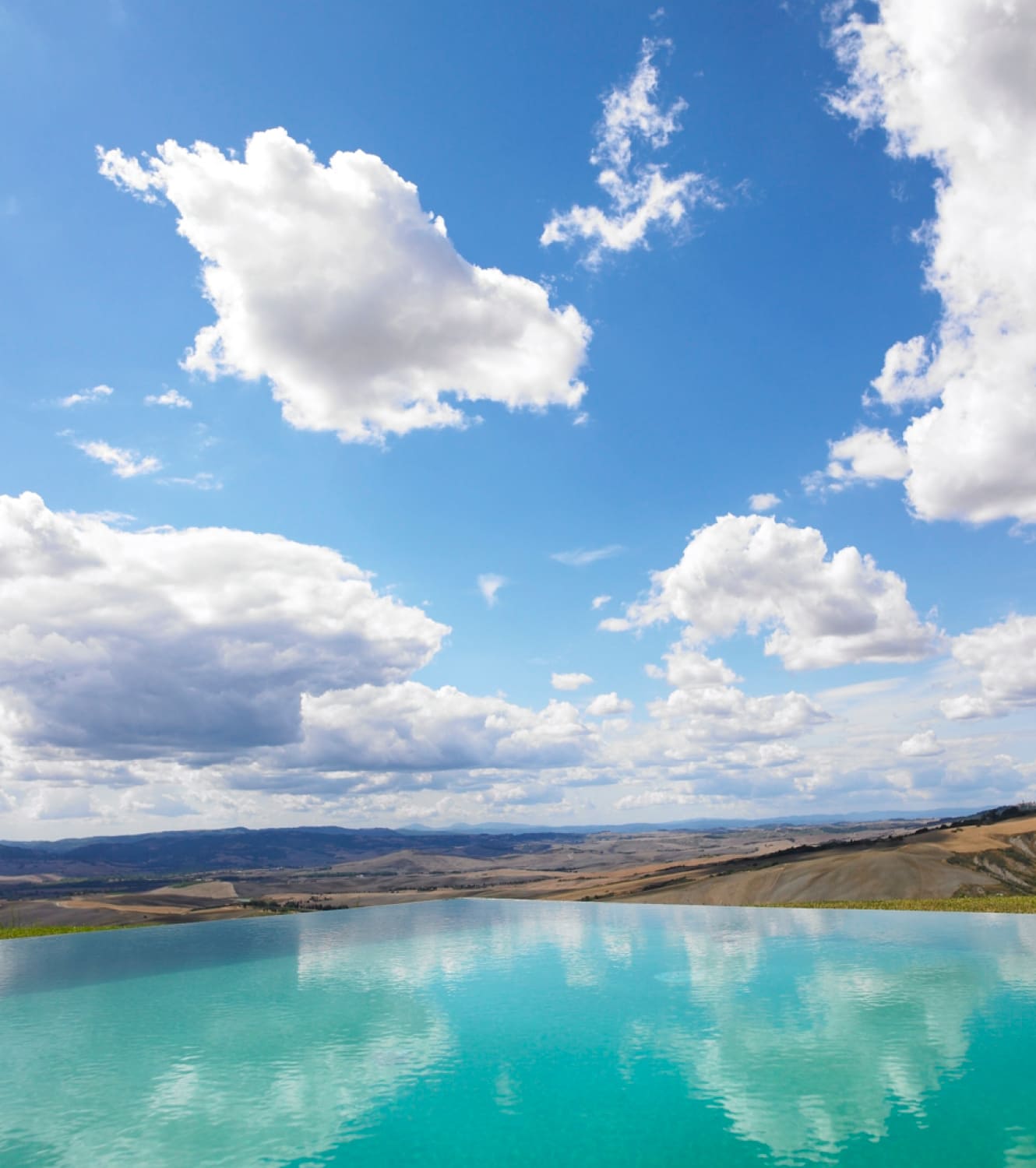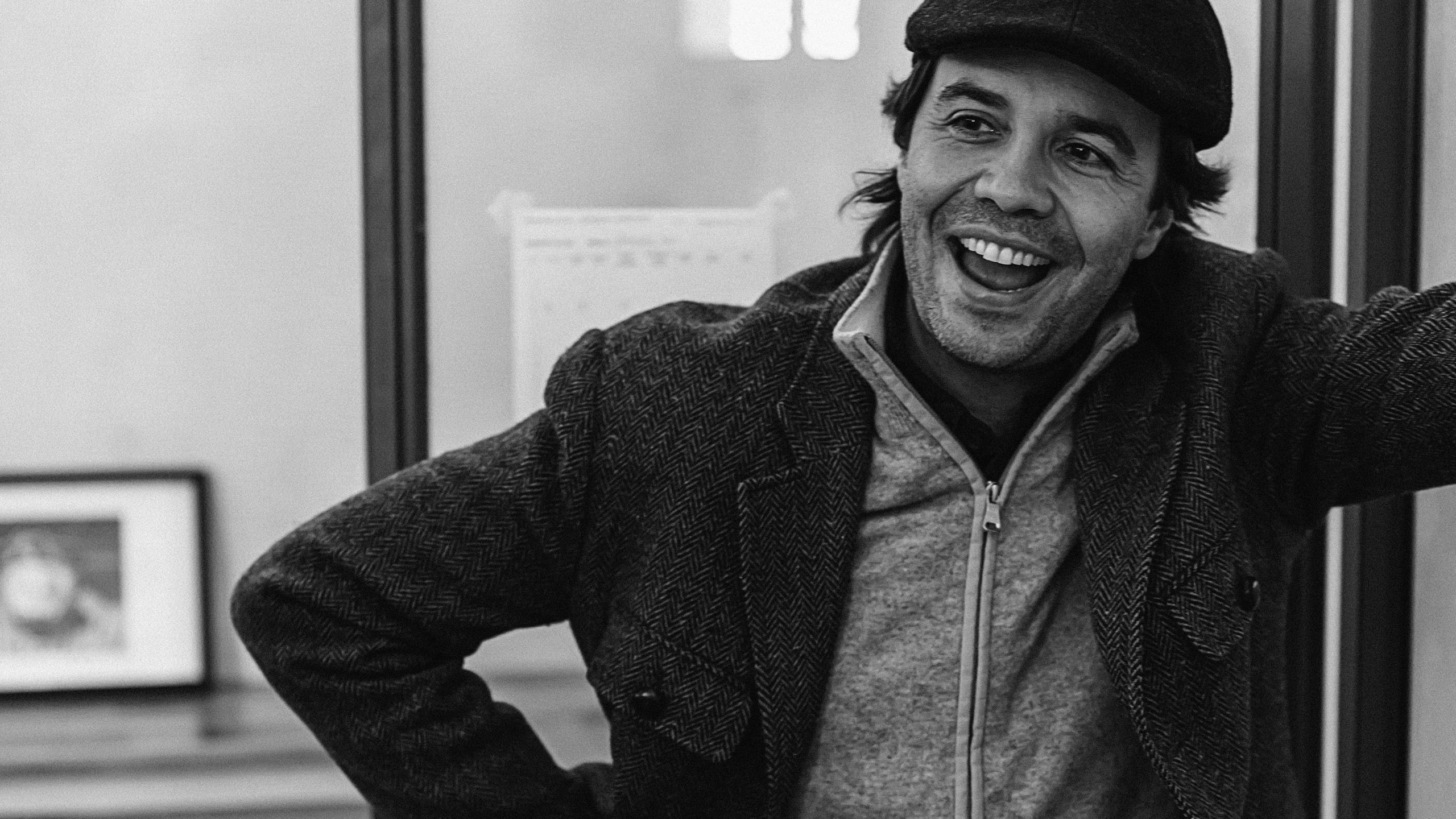
ARGIANO’S POSITIVE TWIST
Listening intently to the land, fastidious soil mapping and a scholarly approach to viticulture, has earned the oldest Montalcino winery’s Brunello, red wine of the year. Nargess Banks visits the Tuscan estate to learn more
When Bernardino Sani and Francesco Monari arrived at Argiano, a historic wine estate in Montalcino, more than a decade ago, the estate was making very different wines than today.
“With courage and vision, they embarked on a plan to make Argiano’s Brunello an elegant and expressive wine of place,” says John Irwin, Italian wine ambassador with Vinitaly International and Maze Row specialist. “They changed the way the estate operated in the vineyard and the cellar, knowing they wouldn’t see the literal fruits of their labor for several years.”
This year, Argiano’s 2016 Brunello di Montalcino Vigna del Suolo was named “Red Wine of the Year ‘’ by Gambero Rosso, Italy’s influential gastronomic magazine. Described as “rich but not dense … assertive, deep, very elegant, with an extraordinary vitality that predicts glorious aging,” the critic added, “We will talk about it for a long time.”
Irwin echos his sentiment: “This wine is just insane. The winemakers’ integrity has paid off.”
THE STORY
Argiano’s tale begins somewhere in the 1580s when the Pecci family from nearby Siena planted vines and olives in the surrounding Tuscan countryside and built a home across the hills in the Sesti Tower. The son, Giovanni Pecci, returned from studying in Rome to build the Renaissance-inspired villa named Bell’Aria (“good air”) to reflect the setting’s perfect microclimate.
The winery — one of the oldest in the region — passed through different noble families over the centuries. Then in 1992 Argiano was purchased by Countess Noemi Marone Cinzano, who in 2012 sold the estate to Andrè Santos Esteves, a Brazilian entrepreneur. He in turn hired Bernardino Sani as CEO and winemaker, and Francesco Monari as agronomist to help reconstruct the estate. Sani recalls the challenge. “Let’s just say, Argiano was a little dusty when we arrived.” And the wines, he adds, “a little heavy”.
Today, he tells a very different story. And so does the wine.
The Argiano estate overlooks Val d’Orcia, and enjoys views of the nearby medieval hill town of Montalcino. This region of southern Tuscany was quite poor until the 1960s, retaining its rural charm with its expansive skies, swaying cypresses, and paths that wind through thick vines and shimmering olive groves.
Brunello di Montalcino is the only appellation in Tuscany to require 100 percent Sangiovese in its wine — Chianti Classico and Vino Nobile di Montepulciano need only 70 to 80 percent of the grape. The grape is famously fussy: it will suffer badly from being planted in the wrong location and in poor soil. But under optimal conditions, Sangiovese produces some of the most elegant wines. And, the land in Montalcino — prized and privileged — offers some of the best territory for realizing Sangiovese’s potential.
Winemaker Sani was aware of this when he began his work at Argiano. Seeking the best expression for Sangiovese, his method was to forge an intimate partnership with nature. Together with his agronomist Monari, he instituted a new focus on terroir-driven wines and with a scientific approach to soil mapping the vineyards. “What makes it unique here is its biodiversity,” he explains. “The land here is covered in vineyards and forests, and there aren’t any industrial disruptions so the soil is well preserved.” Of the estate’s 120 hectares, 57 are under vine.
Sani studied oenology and viticulture in Florence and then at France’s University of Montpellier. He worked in wineries across Europe and the US, picked up commercial experience in the Caribbean, and returned to Italy in 2012, where he worked as a consultant in Piedmont before being approached by Santos Esteves.
“It was like seeing an untouched diamond,” Sani says, recalling the first time he laid eyes on the estate. Situated on a plateau 300 meters above sea level, Argiano benefits from the cool breezes from the nearby Tyrrhenian Sea — the source of the “good air” after which the Pecci family named their villa more than 400 years ago. The cooling breeze, along with an abundance of calcareous limestone amongst the clay soils (the rich soil encourages the vine roots to go deep down), helps give the wines their elegance.
Brunello is the most historic wine here. When the Consortium of Brunello di Montalcino was founded in 1967, just after the Denominazione di Origine Controllata (DOC) designation, there were only 25 producers. In 1980, Brunello di Montalcino was elevated to the higher DOCG (garantita) level, and today the number of producers hovers around 280 with nearly 5,000 acres under vine. Meanwhile, regional production of Brunello is limited to nine million bottles.
“Even though Brunello has seen a rise in popularity, the landscape here hasn’t changed much and the production is kept limited,” Sani says. “So, if you come here and plant a vineyard, you won’t be allowed to make Brunello. The Brunello brand is pretty strong.”

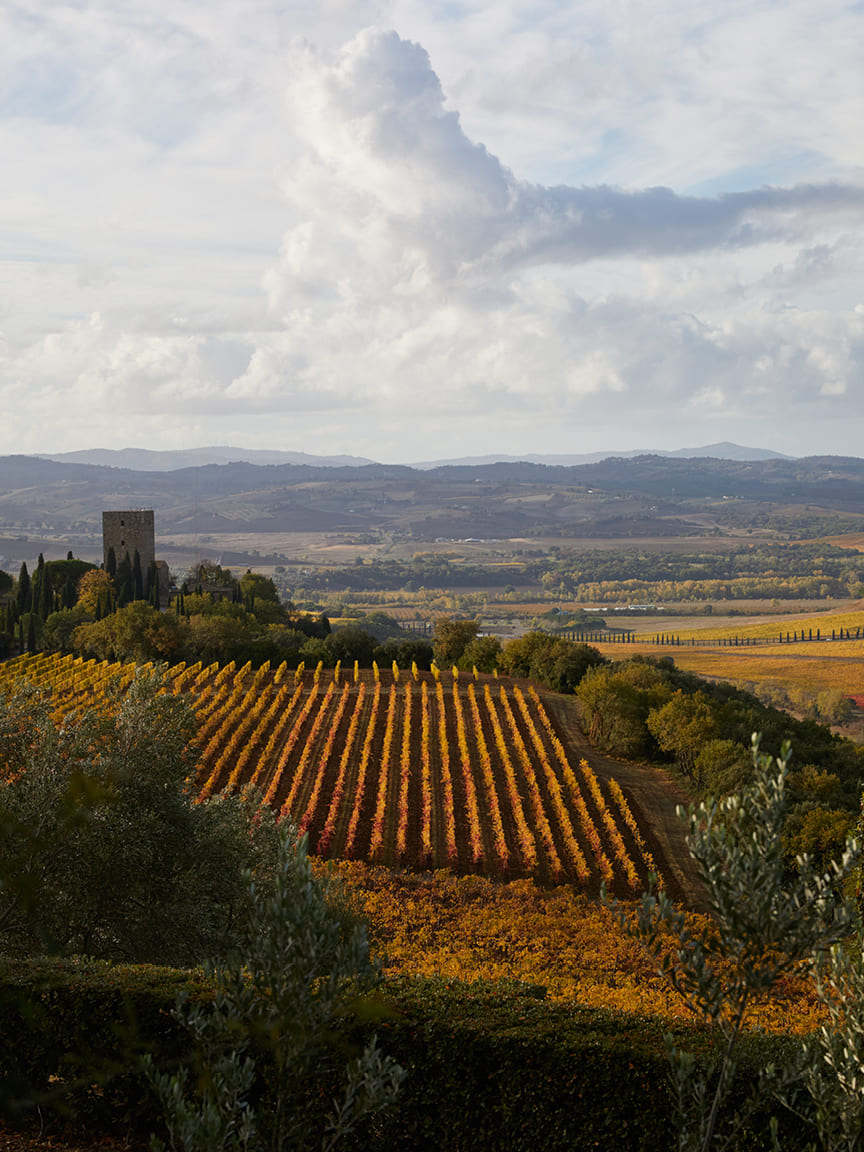
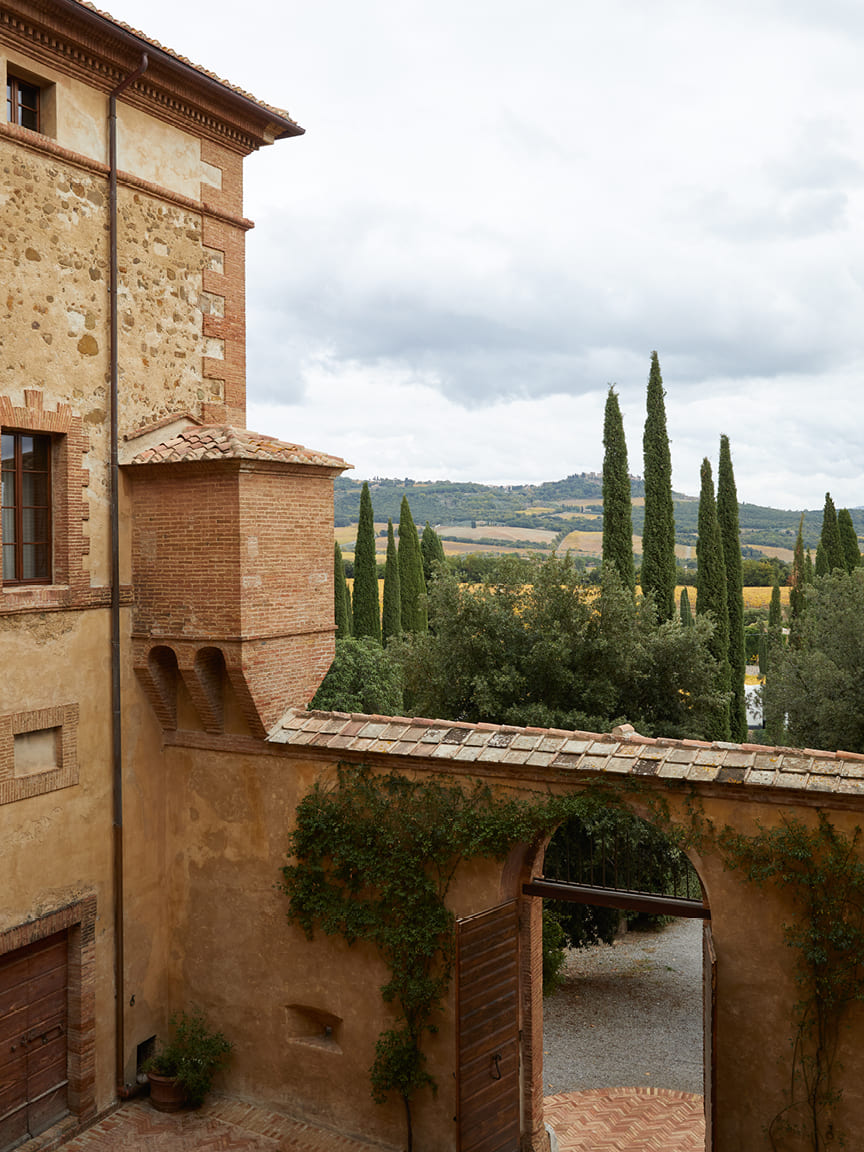
The Argiano estate sits across the hills from Sesti Tower with views of the medieval hill town of Montalcino in Val d’Orcia, Tuscany
LAND, VINE AND FRUIT
Sani’s dog Susina joins us as we venture down to the cellar, which was in much need of repair when the countess sold the property. The rooms have since been fully renovated, maintaining much of the original structure and its charm through repurposing materials. Throughout the villa, in the visitor center and guest rooms furniture made from reclaimed wood from the former roof offers a nod to the past. The cellar is a rather lovely place too — softly lit and with row upon row of bottles stacked neatly, including Argiano’s vintages as well as the owner’s highly impressive personal collection. Sani smiles, “He’s really passionate about wine.”
The wines of Argiano today are a result of not only respecting the land, but understanding it deeply. To do that, Sani and Monari embarked on a mapping survey to identify the vineyards’ soil composition and the optimal parcels for a distinctive Brunello di Montalcino. The parcels are color coded for different soil composition on a satellite and GPS-enabled estate map drawn in 2015.
Sani says the two soil types give them separate advantages. He explains: “Clay gives the full body and power, while limestone gives the vertical taste, the elegance. Together it helps us make wines that are full-bodied but elegant and gentle.”
Sangiovese relies on brightness for its distinctive character. High-pH soils, usually the result of being rich in chalk or limestone, help maintain acidity in grapes that are late into the growing season. With vines as old as 65 years on the estate, these high-calcium soils allow for easier nutrient uptake and water access.
Sani had witnessed the benefits of micromapping working in France and Piedmont, historically though, this hasn’t been the Tuscan approach because of its beneficial climate. “Tuscany is different to, say, Piedmont or Burgundy, because the stable Mediterranean climate here makes it easy to cultivate vines. The idea of micromapping, zoning and parcel selection tends to come from winemaking areas where the weather is a challenge.”
Still, his methodology is proving to be highly effective, especially in an age of climate change. “This approach is useful. Certain areas have become too hot and you need to know what’s in the soil and what you have in the vines, so the grapes don’t ripen too early.”
AGING WITH GRACE
We head towards the tank rooms, walking past barrels of various sizes lined up neatly and in part of the 17th-century cellar, which was restored in 2016 and devoted to the star Brunello.
“We make wines that are very respectful of the terroir, the situation and location,” Sani continues. This means, not taking an aggressive wine making approach — not over-extracting too much structure or concentration, being gentle and respecting the fruit, the grape, during fermentation.
Sani points to a row of new 7,000-liter egg-shaped concrete tanks, where he ferments the six best parcels identified in his map survey. “The egg shape during fermentation allows a natural circular movement of the wine,” he explains. “It has the same effect of a gentle pumping over of the grapes inside the tank.” This method of fermentation, Sani continues, “opens up the wine to help get more complex, rounded terroir driven wines.”
The consorzio’s rules dictate that Brunello age for a minimum of two years in wood barrels, and with time in the bottle, five years in total (six for riserva). Sani explains: “We completely changed how we age wine here, using Slovenian and French oak. We went from 225 liters barrique aging to 1000/3000/5000 liters oak barrels (botti) for Sangiovese for less oaky wines, slower aging, more freshness.”
Though Sangiovese is king of grapes here, Sani says, much like Pinot Noir, it is delicate, and requires a gentler touch. The results: wines that are more nuanced, gastronomic, and representative of this uniquely situated estate.
Argiano also produces two Super Tuscan wines, Solengo and Non Confunditur (“NC”), that are aged in the smaller 225-liter casks. The Cabernet Sauvignon and Petit Verdot (50 and 25 percent respectively) both benefit from more tannins and micro oxidization from the wood to help with the aging process. Incidentally with its first 1995 vintage, the Solengo “lone wild boar” pioneered the Super Tuscan of Montalcino. This was after Countess Cinzano had invited the celebrated oenologist Giacomo Tachis to Argiano, who had suggested the clay soils here would be perfect for international varieties.
We emerge from the cellar. The silvery leaves of the olive groves surrounding the villa at Argiano shimmer in the mellow afternoon light. As CEO, Sani’s vision for Argiano is clear. The estate’s production has been certified organic since 2019. In the vineyard, Sani has reduced planting density and increased biodiversity by introducing insects and beneficial plants between the rows, and using pheromones for natural pest control. The estate is working towards becoming carbon neutral too, implementing a zero-plastic policy. But Sani recognizes that it is a long journey towards full sustainability. More eco-friendly glass bottles, for example, are harder to source, but the winemaker says that will naturally change, given consumer preferences.
Climate change, too, is on his mind. The biggest challenges, he says, are dry, hot summers followed by mild winters, causing the vines to flower early — sometimes as soon as February. Last year, for example, unseasonably warm weather in February and March caused the vines to flower early, and when the vineyards in Italy and much of France were hit with extreme cold nights and frost in April and May, producers experienced crop-damaging losses. Sani’s team mitigated the damage with giant candles, but not before suffering a 30-percent reduction in crops. Despite the loss, he says, 2021 is one of Argiano’s best vintages ever in terms of quality.
“Here, you feel the agency, much, much more than my friends who live in cities. When you’re in such close contact with nature, you can see the problems facing us with global warming. And it is scary,” he says.
Sani believes the recently awarded Vigna del Suolo is the best expression of Argiano. “It represents history, as it is the oldest vineyard on the property with the oldest clones of Sangiovese,” he says. While it wasn’t the most powerful in barrel, he believes coming from a parcel rich with limestone, the Suolo “is elegant and certainly one with the most complexity.” He calls the wine “the soul of Argiano.”
Even after a decade at the helm, Sani and his boss still share a long-term vision for Argiano. Santos Esteves, he says, “has a huge passion for wine and for this place.” Rather than making quick sales, the men want to leave a legacy.
When Santos Esteves purchased Argiano, he asked Sani to “fix it,” says the winemaker. “But when he saw the new quality of our wines, he became excited.” Now he is personally involved with the restoration of the villa. “He has a big, long-term vision.”
“The wines of Argiano today are a result of not only respecting the land, but understanding it deeply.”
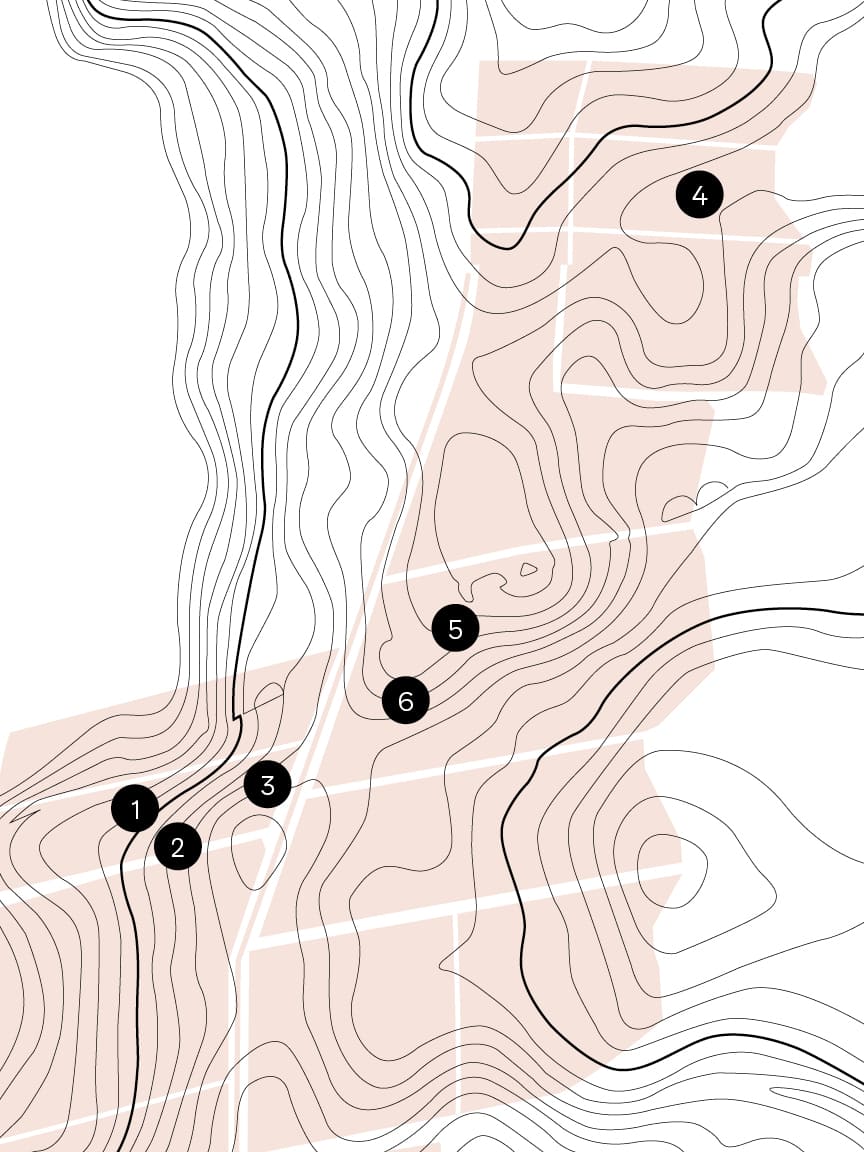
Argiano’s mapping survey has identified the vineyards’ soil composition and the optimal parcels for creating distinct wines
1-3 are experimental micro-terroirs
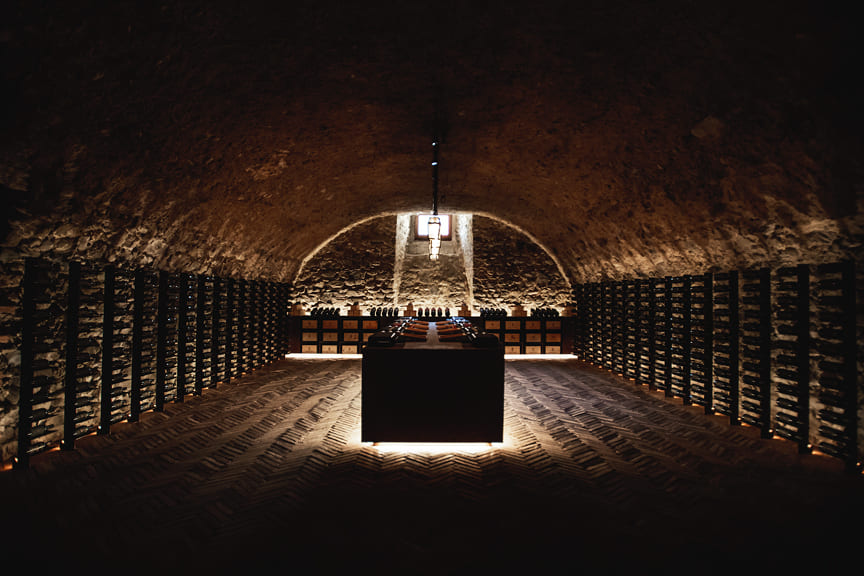
The renovated cellar house the estate’s vintage collection to include Argiano’s prized Brunello di Montalcino

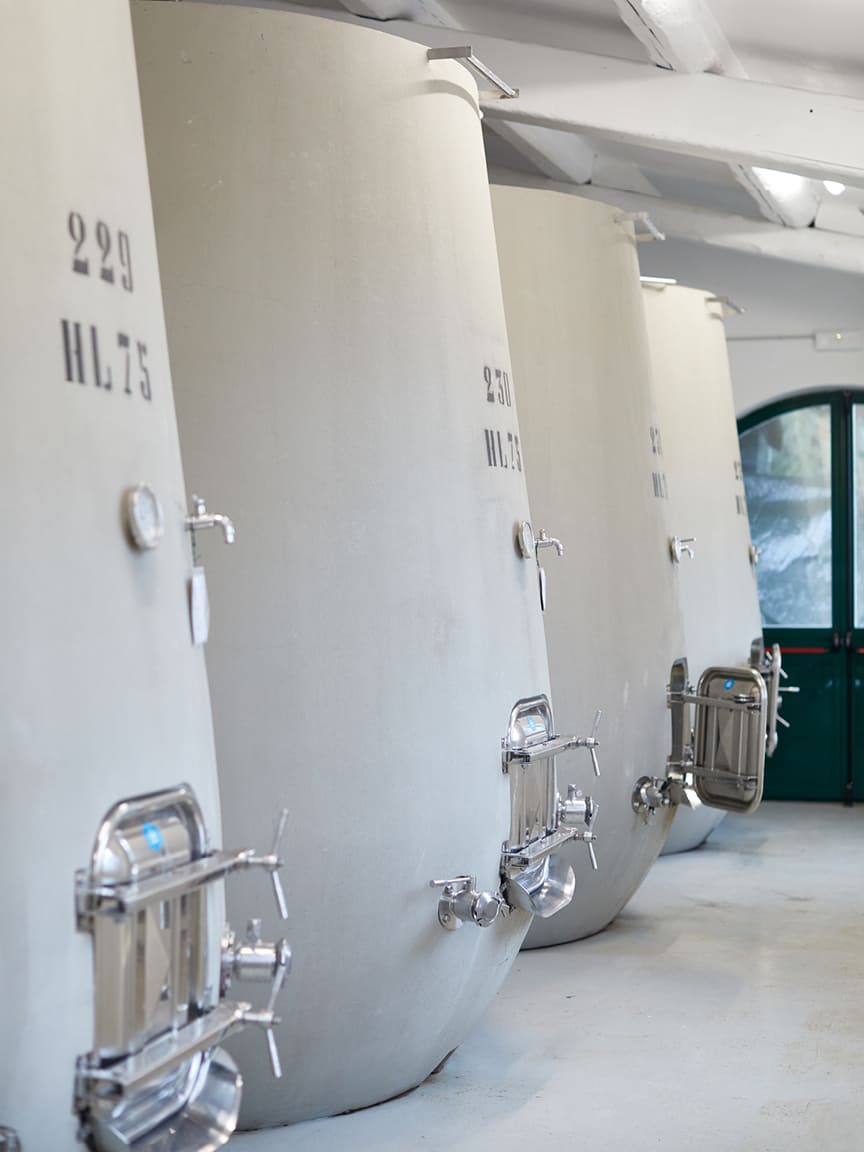
Argiano ferments its six best parcels in egg-shaped concrete tanks, the shape allows for a natural circular movement of the liquid for more complex, rounded terroir driven wines
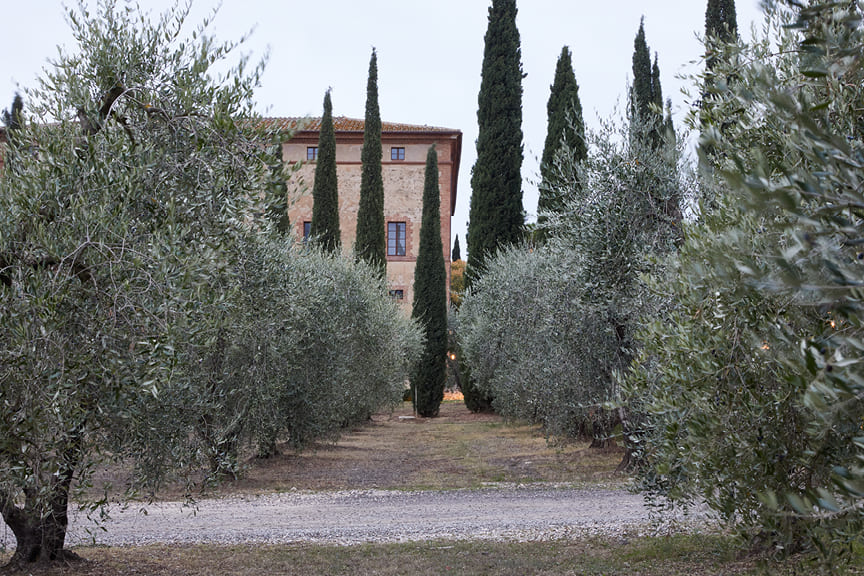
The Argiano estate produces its own olive oil and honey

FIVE MINUTES WITH ARGIANO CEO AND WINEMAKER, BERNARDINO SANI
Preferred wine style
With reds, I love Piedmont wines, especially Ratti winery’s collection, as well as Burgundy and Pinot Noir in general. For whites, Sicilian and Amalfi coast wines are excellent.
And from the Argiano collection
Beside Vigna del Suolo Brunello di Montalcino, I love the 2016, 2018 and 2019 vintages of Solengo.
Pairing food and wine
Italian wines, and especially wines like the Brunello, have a strong connection with food — they are wines made for local cuisines. Typically, you would pair Brunello with Tuscan Pici pasta, or a wild boar ragù. But this is too obvious. The Vigna del Suolo pairs beautifully with a popular dish of cod fish made in tomato sauce and garlic. The wine is salty, with some acidity, so it goes very well with this dish.
STAY, EAT AND SEE
The Renaissance-styled Villa Bell’Aria has been thoughtfully restored under the new ownership, with public spaces devoted to events, a Baroque music festival and a soon-to-be opened gallery dedicated to Renaissance art and artifacts.
Guest accommodation is in the original complex of country houses surrounding the villa. There are 10 guest rooms and suites, with prices ranging from $280 to $1,000 per night. The estate requires a minimum stay of three nights, which includes breakfast daily and full amenities including the pool. For an exclusive experience, guests can rent the entire property, which accommodates up to 22 people (packages range from $73,000 to $104,000 for a week).
Visitors can reserve dinner at the estate, prepared by chef Elena Montini, whose seasonal menu changes daily based on fresh, local ingredients. Montini prepares meals with the estate’s own olive oil and honey, sources produce from village markets as well as forages the nearby woodlands for mushrooms and the delicacies for which the region is known — truffles, hazelnuts and chestnuts. Naturally, the estate’s wines are served at tablesides.
ARGIANO FACT FILE
Region: Montalcino
Founded: 1580
Proprietor: Andrè Santos Esteves
CEO and Winemaker: Bernardino Sani
Vineyards: Montalcino 57 ha
Environmental: Certified organic in the EU
PHOTOGRAPHY BY Leigh Banks, Helen Cathcart, Roberto Fortunato
We recommend
MAKING HISTORY
With high praise for Argiano’s award-winning Brunello di Montalcino, winemaker and CEO Bernardino Sani shares his recipe for success, and his story, with Brian Freedman
GROUND CONTROL
Soil mapping is transforming winemakers’ knowledge of their land. Pedro Parra, whose work on the Brunello di Montalcino wines has led to the creation of the award-winning Argiano’s Vigna del Suolo 2018
LIQUID ASSETS
Chosen with care like art, fine wine can be a great investment. But what are the best ways to get started? Suzanne Denevan-Brown kick-starts our new series
WINE TRAILS OF THE VAL D’ORCIA AND MONTALCINO
Continuing our Italian road trip in Val d’Orcia and Montalcino, where we visit wineries, cuisines, and stay in places that express this unique part of Tuscany


